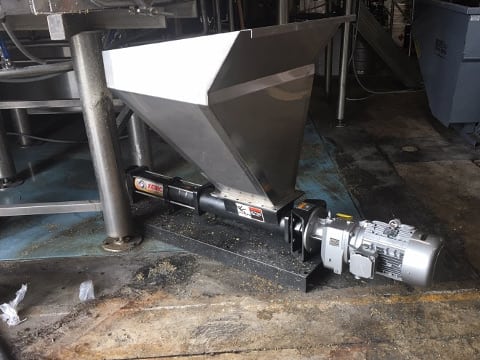Spent Grain Pumps
Spent grain is an extremely difficult material to work with. Traditional conveyance methods become problematic quickly and even many solutions specifically designed for it barely work. But there is a solution.
Spent grain is one of the most difficult-to-work-with substances out there. And with lots of experience in food, beverage, pharma, and chemical industries, that’s saying a lot. It’s heavy, it bridges, it stinks, and if you take too long, it gets stuck. But it’s not impossible. If you have a short, straight shot to your silo, just ask us about screw conveyors.
But if your path is long or winding, there are three manufacturers that are practical.
Ponndorf Pumps
More expensive up-front, requires consistent moisture content
The Ponndorf is an air pump that uses compressors to generate air “slugs” that push the spent grain through the lines. The main problem brewers and distillers have with this solution is that their spent grain’s moisture content will vary, so they will have to either change the pump settings until it moves the grain or change the moisture content to fit the settings. (If the grain gets too wet it becomes too heavy, and if it’s too dry air will puncture through the grain. But instead of running dry and damaging the pump, the fix is simply to flush it with more air.) The benefit here is that you never have to replace the stators.
Netzsch Pumps
More expensive progressive cavity
Netzsch progressive cavity pumps were long the industry standard. The problem with them is the rubber stators, which cost about 1/5 the cost of the pump and would burn out when run dry. Brewers tried simply not running them dry, but with how inconsistently spent grain flows (or doesn’t) intermittent dry runs were inevitable, and costs were high. Netzsch tried fitting them with sensors to automatically stop when dry-running was detected, but because the sensors relied on temperature, damage was already done by the time the pump switched off. On the nightmarish end of the spectrum, one of our larger customers were spending over $100k/yr replacing stators.
If you like Netzsch but want to avoid this problem, we can use their pump and swap in a metal stator.
Xeric
Recommended – Less expensive progressive cavity
Simply put, Xeric is the slightly cheaper—albiet similar quality—version on the Netzsch pumps, but they already have the metal stator. It requires less fiddling on the floor, but the metal stators do eventually have to be replaced. Xeric is pretty much the industry-standard nowadays and is the option we will go with unless you prefer something else.
Note:
All the above solutions are for indrect runs requiring corners. If you have a straight shot, screw conveyors are often sufficient.
F.A.Q.
How do I clear the lines in a progressive cavity pump?
For a quick cleaning, you can run water through the line, which should be done periodically. For a more thorough cleaning, you can detach the pump from the line, push a cable through it with a squeegie puck attached, and pull it through.
Do we need a specific consistency of grain?
For pneumatic systems, yes. For progressive cavity pumps, no.
Are rubber or metal stators better?
Rubber stators will be a little more efficient because they get a better seal with the shaft, but they will burn if run dry. When making the decision between the two, the main question is how attentive and detail-oriented your staff is. If you are confident they will never run the pump dry, then a rubber stator is better. But if not, it’s best to go with metal.
How much do spent grain pumps cost?
Pumps for smaller breweries and distilleries will start around 35k, with larger pumps being around 80.
Can spent grain pumps be mobile?
Theoretically the progressive cavity pumps could be put on castors allowing you to wheel it under the discharge when it’s needed, but you will either need a secure swivel in the line or you will need to disconnect it when you wheel it away and reconnect it when you use it again.
When do we need a spent grain pump?
The cost of a spent grain pump is justified when it’s offset by the labor savings of hauling it away manually and the morale you save by sparing your brewers having to deal with spent grain. A few brewers will get one for a 10 barrel system, and pretty much everyone will have one by the time they get to 20.
